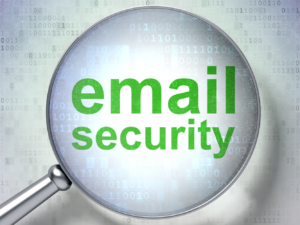Email isn’t just a tool; it’s the lifeblood of modern business communication. But while it opens doors to opportunity, it also leaves a crack for cybercriminals to slip through. And here’s the deal – the bad guys are getting bolder.
Business Email Compromise (BEC) attacks are skyrocketing, and if you’re not paying attention, your company could be next on the hit list. The cost? Potentially devastating.
What Exactly Is a BEC Attack?
Imagine this: A seemingly urgent email lands in an employee’s inbox, apparently from your CEO or IT team. It asks for sensitive details or an immediate wire transfer. Sounds legitimate, right? That’s exactly what cybercriminals are banking on. They’re master impersonators, preying on trust and urgency to achieve their sinister goals.
Shockingly, nearly 90% of BEC attacks follow this script. It’s no wonder employees, eager to please and act quickly, sometimes fall into the trap.
The Alarming Rise of BEC Attacks
Brace yourself for these numbers: Researchers analyzing 1.8 billion emails worldwide discovered a staggering 208 million malicious emails. Over half of these – 58% – were BEC attempts. That’s not just a trend; it’s an epidemic.
BEC scams have overtaken ransomware and malware as the top email threat. And the biggest targets? Often, it’s employees lower in the hierarchy who might be less suspicious of directives from “management.” Cybercriminals know exactly where to aim to get results.
The Bigger Picture
While BEC dominates, don’t overlook the continued dangers of phishing and commercial spam. These scams are designed to harvest sensitive information, such as login credentials, paving the way for even bigger attacks. The combined force of these threats is now outpacing traditional cyberattacks. The stakes have never been higher.

Protecting Your Business
Here’s the good news: Defending your company against BEC attacks doesn’t have to be complicated or expensive. The key is awareness.
- Train Your Team: Conduct regular cybersecurity training sessions to help employees recognize red flags in emails. Include practical examples of BEC attempts and phishing scams to make the training relatable and memorable. Security awareness training should cover all security topics, not just email threats.
- Establish Verification Protocols: Develop clear processes for verifying requests for sensitive information or financial transactions. For instance, require verbal confirmation via a known phone number before executing wire transfers or sharing confidential data.
- Implement Email Security Tools: Use advanced email filtering and threat detection software to identify and block malicious emails before they reach inboxes. Many solutions also provide warning banners for suspicious messages.
- Enable Multi-Factor Authentication (MFA): Protect employee accounts by requiring a second form of verification, such as a code sent to a phone, in addition to a password.
- Use Role-Based Access Controls: Limit access to sensitive information and financial systems based on an employee’s role. This minimizes the potential damage of compromised accounts.
- Encourage a Culture of Caution: Promote a workplace culture where employees feel empowered to question unusual requests, regardless of perceived authority. Reinforce the message that it’s better to pause and verify than to act hastily.
- Conduct Simulated Phishing Tests: Periodically run fake phishing campaigns to test your team’s awareness and identify areas for improvement. Use the results to refine training programs.
Need a partner in cybersecurity? We’re here to help. Together, we can fortify your business and keep those cyber criminals out of your inbox. Reach out today – don’t wait until it’s too late.







